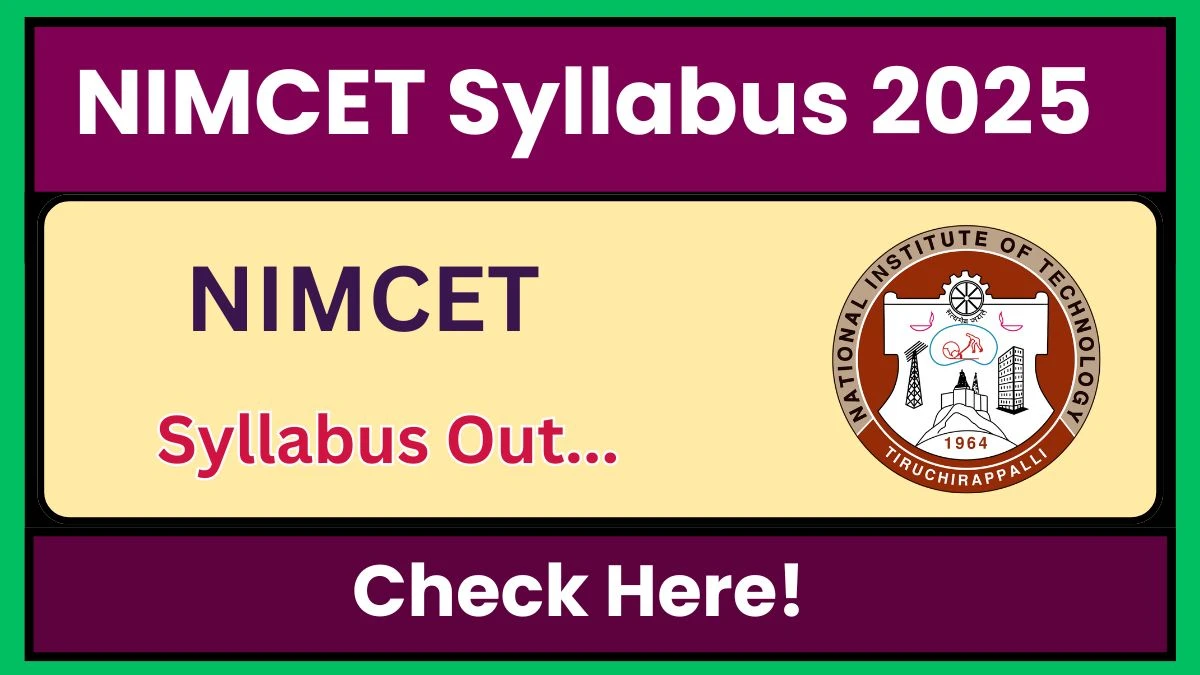NIMCET Syllabus 2025 Available @ nitt.edu
The NIMCET Syllabus 2025 is crucial for students as it provides a clear understanding of the subjects and topics that will be covered in the exam. Successfully qualifying the NIMCET 2025 is vital, as it determines admission opportunities and financial assistance for postgraduate (Master’s) programs at NITs. Additionally, renowned institutions like Harcourt Butler Technical University (HBTU) Kanpur, Hyderabad Central University (HCU), and Indraprastha University Delhi also accept NIMCET scores for their MCA admissions. Therefore, having a thorough knowledge of the NIMCET syllabus is essential for students to plan their preparation strategically and excel in the exam.
Check - NIMCET Syllabus 2025
| Information | Details |
| Company Name | National Institute of Technology |
| Exam Name | NIMCET |
| Category | Syllabus |
| Status | Out |
| Official Site | nitt.edu |
What is the NIMCET Syllabus 2025 Exam Pattern?
| Subject | Total Marks | Total Number of Questions | Marks Awarded (Correct Answer) | Marks Deducted (Wrong Answer) |
|---|---|---|---|---|
| Mathematics | 600 | 50 | 12 | 3 |
| Analytical Ability & Logical Reasoning | 240 | 40 | 6 | 1.5 |
| Computer Awareness | 120 | 20 | 6 | 1.5 |
| General English | 40 | 10 | 4 | 1 |
What is the NIMCET Syllabus 2025?
Mathematics:
Set Theory
- Concept of sets – Union, Intersection, Cardinality, Elementary counting; permutations and combinations.
Probability and Statistics
- Basic concepts of probability theory, Averages, Dependent and independent events, frequency distributions, measures of central tendencies and dispersions.
Algebra
- Fundamental operations in algebra, expansions, factorization, simultaneous linear /quadratic equations, indices, logarithms, arithmetic, geometric and harmonic progressions, determinants, and matrices.
Coordinate Geometry
- Rectangular Cartesian coordinates, distance formulae, equation of a line, and the intersection of lines, pair of straight lines, equations of a circle, parabola, ellipse and hyperbola.
Calculus
- Limit of functions, continuous function, differentiation of function, tangents and normals, simple examples of maxima and minima. Integration of functions by parts, by substitution and by partial fraction, definite integrals, and applications of definite integrals to areas.
Vectors
- Position vector, addition and subtraction of vectors, scalar and vector products and their applications to simple geometrical problems and mechanics.
Trigonometry
- Simple identities, trigonometric equations, properties of triangles, solutions of triangles, heights and distances, general solutions of trigonometric equations.
Computer Awareness:
Computer Basics
- Organization of a computer, Central Processing Unit (CPU), the structure of instructions in CPU, input/output devices, computer memory, and back-up devices.
Data Representation
- Representation of characters, integers and fractions, binary and hexadecimal representations
Binary Arithmetic
- Addition, subtraction, multiplication, division, simple arithmetic and twos complement arithmetic, floating point representation of numbers, Boolean algebra, truth tables, Venn diagrams

 Sarkari Result
Sarkari Result

